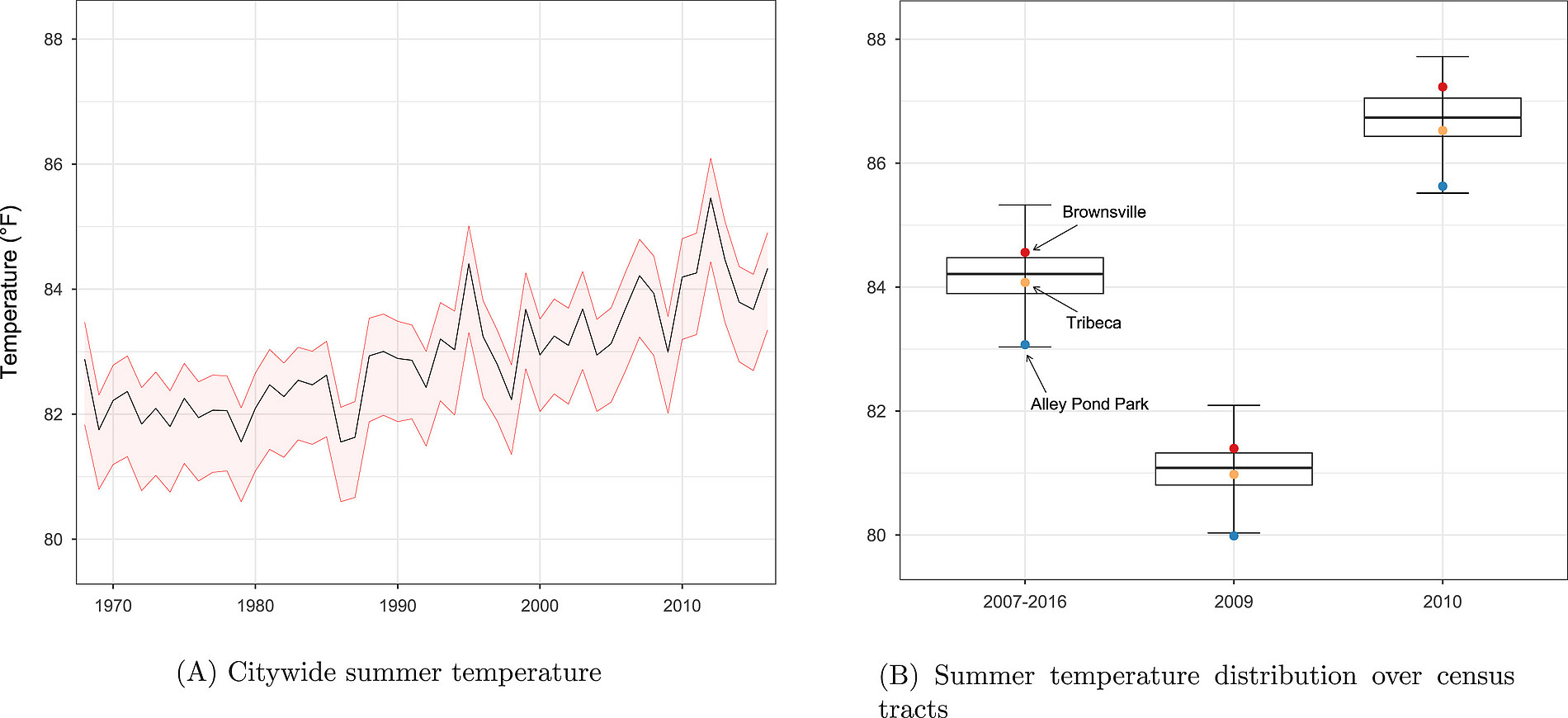Urban heat and within-city residential sorting
Published in Journal of Environmental Economics and Management, 2024
In recent decades, urban temperatures have increased worldwide due to climate change. Recent studies show that extreme temperatures disproportionately affect urban residents depending on income, race, and ethnicity. Marginalized residents—primarily lower‑income groups and minorities—tend to live in neighborhoods where heat exposure is significantly higher.
Urban heat and its unequal distribution have become a critical concern in cities across the globe. Low‑income and minority households often reside in thermally inefficient housing in underprivileged neighborhoods, and most have limited access to affordable cooling options. This lack of adaptation capacity amplifies the health and well‑being risks during periods of extreme heat
In this study, we examine intra-urban inequalities in heat exposure in New York City, combining high-resolution temperature data with detailed demographic information at the neighborhood level. We present new causal evidence on how urban heat contributes to sorting within a city. We estimate a discrete choice residential sorting model that includes census-tract fixed effects and controls for open space and green coverage to analyze how differences in urban heat at the census-tract level, as shown in Figure 1,

Our results show clear patterns of residential sorting, with whites and high-income households outcompeting other racial/ethnic groups and low-income households for housing in cooler neighborhoods. Our counterfactual exercise, inspired by Cool Neighborhoods NYC, reveals that heat-mitigation policies can make poorer and minority households, on average, worse off. These findings are striking, considering that such programs often aim to enhance welfare in heat-exposed neighborhoods predominantly inhabited by low-income and minority households.
The results contribute to the growing literature on climate justice in cities and highlight the need for targeted adaptation strategies that prioritize the most affected communities.